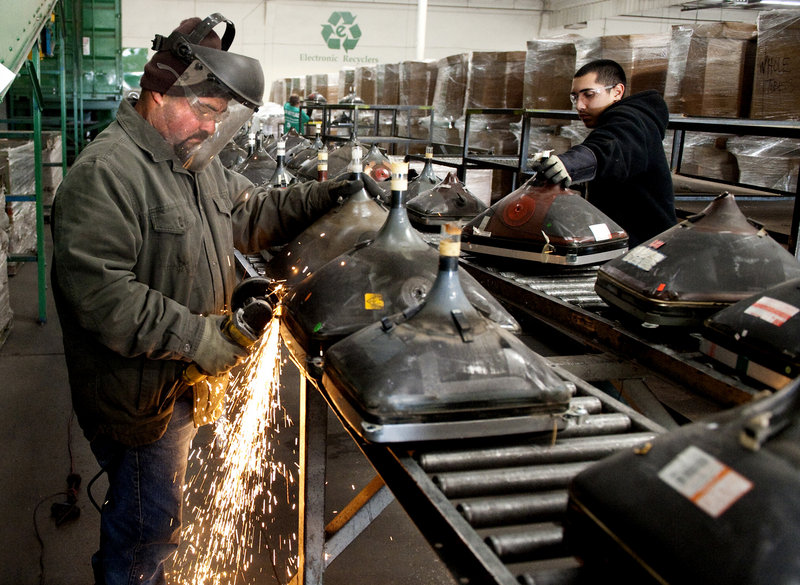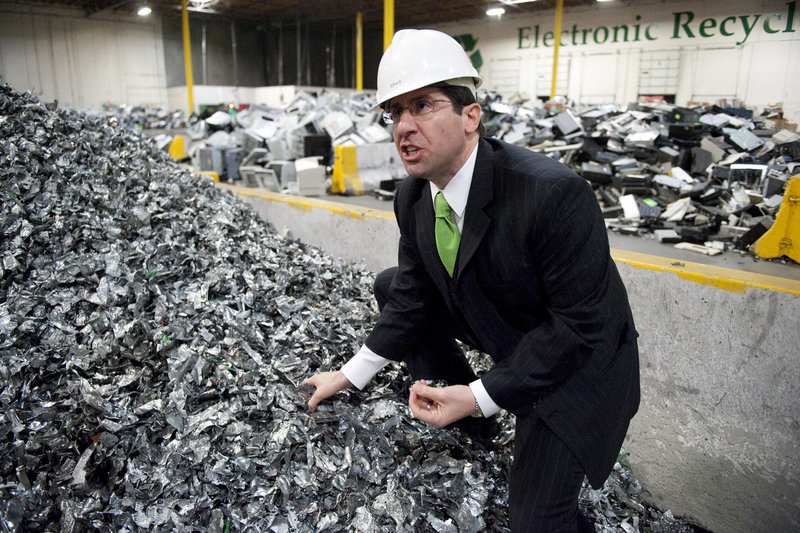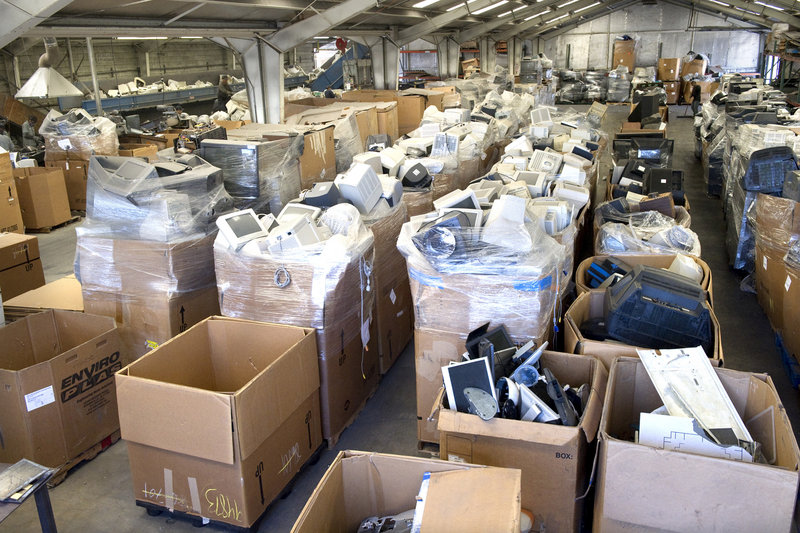SACRAMENTO, Calif. – It seemed a perfect symmetry: California, the world’s high-tech capital, would lead the way in recycling the debris of our digital revolution.
But five years after its launch, the state government-run electronic waste program stands out not as a model of the green innovation for which California is famous but as an example of good intentions gone awry.
paying more than $320 million to collect and recycle computer monitors and televisions, the state has built a magnet for fraud totaling tens of millions of dollars, including illegal material smuggled in from out of state.
“I don’t think anybody could have forecast the greed that has poisoned the program,” said Bob Erie, chief executive officer of E-World Recyclers north of San Diego and once an enthusiastic supporter of the state effort.
None of the many states that followed California took on e-waste recycling as a government program; instead, they made industry responsible for its own waste.
California officials have long been aware of the problems with their approach, too; they met with recycling industry officials two years ago at a private club in Los Angeles to discuss solutions, including whether the state should be in the e-waste business at all.
But nothing has changed. Instead, McClatchy Newspapers found:
• Recyclers and collectors have submitted $23 million in faulty and fraudulent e-waste claims that have been rejected by the state. But state and industry officials estimate that other ineligible claims, totaling as much as $30 million, may have inadvertently been paid.
• More than two dozen e-waste firms have been investigated for fraud by the state Department of Toxic Substances Control over the past two years, but none has been fined or prosecuted.
• Even though California officials know that illegal e-waste is flowing into the state — and acknowledge that public funds are being wasted recycling some of it — no state official has traveled out of state to investigate.
Truck after truck drops its load of electronic garbage at ECS Refining, one of the state’s best-known e-waste recyclers based in the heart of Silicon Valley.
Until it is fed into two ear-piercing shredders, the pyramid of printers, fax machines, keyboards, CD players and telephones serves as a monument to our electronic obsession.
Not far away, some of the heaviest, most hazardous material also piles up: computer monitors and TVs, both of which contain significant amounts of lead. Each year Californians discard about 3.3 million of them, 9,200 a day on average.
Those larger items are the targets of California’s e-waste recycling program, which began Jan. 1, 2005. Six million unwanted monitors and TVs that had no value on New Year’s Eve turned into green gold overnight.
The goal of the law was to prevent lead-laden glass tubes from winding up in landfills while jump-starting a green industry to collect and recycle the castoffs. At that, it has been a resounding success. So far some 840 million pounds of monitors and TVs, about 17 million units, have been recycled in California, more than in any other state.
“It’s easy to throw stones, but the hard numbers on what we’ve recycled as a state are astonishing,” said John Shegerian, chief executive officer of Electronic Recyclers International.
His firm, based in Fresno, Calif., is the largest monitor and TV recycler in the state. But that distinction bears a footnote: The state has rejected $2.7 million of ERI’s claims, mostly in 2008 and 2009, state records show.
“I am not happy about it. I am not proud of it,” said Shegerian, blaming tougher state scrutiny of e-waste sources for the denials. “That was a black period. And financially it hurt.”
California’s electronic waste recycling system could be likened to a gigantic river. At the mouth of the waterway are some 60 recyclers who tear apart TVs and monitors for copper, steel, plastic and other components.
Upstream are more than 500 collectors, who funnel e-waste to recyclers. Farther upstream are handlers — scavengers and peddlers — who round up material to sell to the collectors.
Overseeing the flow are two agencies: CalRecycle, which scrutinizes claims and pays recyclers, and the Department of Toxic Substances Control, which investigates fraud and environmental violations.
Funding it all are state consumers, through an $8 to $25 fee on the purchase of new monitors and televisions.
At the program’s inception, with hundreds of millions of dollars in state payments up for grabs, companies seemed to appear out of nowhere.
“It was the second coming of the California Gold Rush,” said Erie, the Southern California recycler. “They came from Texas. They came from Pennsylvania. They came from all over the place and said, ‘Let’s open up in California because the government’s paying money.’ “
That frenzy caught the state off guard. Faulty and fraudulent claims of $1.9 million the first year climbed to $6.8 million in 2008 and to $9.8 million last year; the state has rejected payment on 6.5 percent of all claims — $22.6 million out of $347 million.
Unknown is how many ineligible claims have escaped notice. “If you are going to hold me to a number, add probably another 10 percent for the stuff that got through,” said Jeff Mahan, chief of the e-waste fraud unit at the toxic substances control department.
Send questions/comments to the editors.





Success. Please wait for the page to reload. If the page does not reload within 5 seconds, please refresh the page.
Enter your email and password to access comments.
Hi, to comment on stories you must . This profile is in addition to your subscription and website login.
Already have a commenting profile? .
Invalid username/password.
Please check your email to confirm and complete your registration.
Only subscribers are eligible to post comments. Please subscribe or login first for digital access. Here’s why.
Use the form below to reset your password. When you've submitted your account email, we will send an email with a reset code.